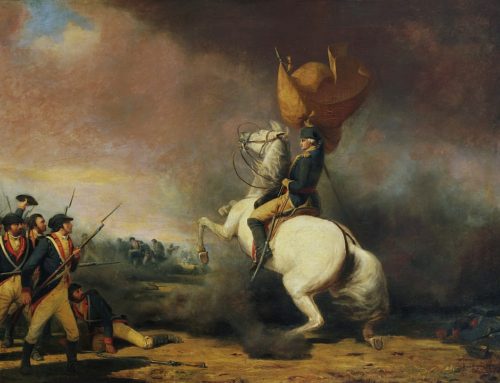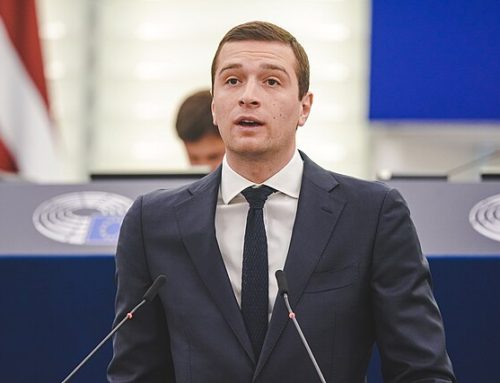By Simon Goodman
The Orpheus Clock
The title of Goodman’s book derives from one of his families prized heirlooms—The Orpheus Clock—that was not recovered by his family until some 70 years following World War II.
‘Orpheus Clock’ painted with scenes of the Greek mythical hero in the underworld. Orpheus was a legendary musician, poet, and prophet in ancient Greek religion.
Goodman described the clock that combined mechanical mastery and artistic genius: “with a case of gold and bronze covered with intricate high-relief depictions of scenes from the legend of Orpheus in the Underworld,
Monument Men— In 1944-1945, about 345 men from 13 Allied countries tried to retrieve Nazi stolen art (Sadly, the Western governments who received this art were indifferent to the fate of those Jews whose works were stolen).
My good friend, Patti Gondelman, recommended this book, knowing my lifelong interest in World War II. After reading this book, I heartily hope that many of you will read this compelling true story about the horrors of the holocaust, the widespread Nazi art theft, and the indifference of politicians, art dealers, art museums, auction houses, commercial banks, etc. to the fate of the Jewish survivors and their heirs. Goodman weaves a compelling detective story of the multiple steps required to retrieve his inheritance.
Getting justice has taken decades that involved countless litigation, humiliation, and bureaucratic inertia. To overcome these obstinate forces, the Goodman family had to be resourceful and determined to achieve justice. Until the generation involved with World War II lost their grip on power, restitution was almost impossible. Today’s generation, unburdened by complicity and guilt, were much more responsive to the rightful claims of the descendants of the holocaust.
Goodman gave two motives for his tenacity
1) He wanted justice for his grandparents.
Each time he recovered a teacup, a tapestry, a clock, he felt Fritz, Louise (His murdered grandparents) and his father looking proudly over his shoulder.
2) He was angry at the ‘murders, the thefts, the lies and the betrayals they had endured.
Goodman’s (family Anglicized their name after World War I) book provides a fascinating insight into the history of one of the great German, Jewish Banking families from the unification of Germany (1871), through their degradation under the aegis of the Nazis, and then their post World War II experience.
Until the Nazis came to power the Gutmanns enjoyed a charmed life. The family were highly educated converted Jews who ran the German Dresdner Bank—Germany’s second largest bank. To give some concept of their wealth, I will summarize their household staff:
They employed a butler, a cook, a governess, seven maids, two chauffeurs and an army of grounds men. For Lili’s ( Simon’s aunt) tenth birthday, an entire circus troupe – clowns, lions, lion-tamers and trapeze artists – performed under a big top in the garden.
Only after his father’s death did Simon Goodman understand the tragic circumstances surrounding his father unsuccessful quest to retrieve his family’s art treasures. Bernard Goodman (Simon’s father) confronted mean-spirited bureaucrats in West Germany, the Netherlands, and France. Moreover, because much of the history of Nazi stolen art was deemed confidential, members of the lay public could not obtain critical data needed to retrieve their claims
In the book, Simon Goodman exposed the deceitful role of art dealers, art auction houses, private collectors and banks. In brief, all of these institutions and individuals put up horrendous roadblocks and hired teams of lawyers to prevent justice. Stated differently, everyone is aware that the Nazis looted Europe, robbing both museums and individuals of art and much else. What is less known is the obstacles allied governments (and much later, museums and lawyers) put up against anyone seeking to recover their stolen property.
Let me give a specific example of the Catch 22 vortex that confronted victims and their heirs.
After the war when Simon Goodman’s father approached the Dutch government to reclaim his parents’ estate near Amsterdam (Fritz and Louise had, ironically, thought they would be safe from the Nazis in The Netherlands), he was told he would have to pay back taxes for the years of the German occupation. Claimants of stolen art works had to describe them in detail (exact canvas dimensions, for example) and provide documentation of ownership – documentation that often could be found only in the captured Nazi records on stolen artwork. These records had been declared classified and sealed by the Allies.
Museums and auction houses were no less intransigent. In one meeting about a painting that had belonged to the Gutmanns, a museum’s attorneys weren’t satisfied with documentation providing it had belonged to the family: They also demanded to see Simon’s birth certificate to prove he was Bernard’s son.
In the case of a Renoir that had clearly belonged to the Gutmanns and come into the possession of Sotheby’s, the auction house authorities told Simon they were prepared to negotiate if he could document that his father had exercised “due diligence” in his postwar search for the painting. In other words, Sotheby’s wanted to be satisfied that Bernard had looked hard enough to deserve to get it back. Even after Goodman provided Sotheby his father’s frantic efforts for fifty years, Sotheby still was not forthcoming.
Catch-22 experiences ended many efforts to retrieve the Goodman belongings before they began. Goodman pointed out that the proof itself “had been dispersed, destroyed or taken by the very people who stole the paintings in the first place.” Stated differently, many of the notorious Nazi art dealers who initially connived to dispossess the Goodmans ultimate got these art works back from the well-meaning allied authorities.
Fortunately, some sixty years following World War II, a positive supportive intellectual atmosphere evolved, providing an environment in which Simon Goodman could successfully retrieve after arduous efforts his family’s treasures. In his efforts, his father’s meticulous records helped Simon Goodman immeasurably. These were stored in scores of boxes that were shipped to his brother’s home following his Dad’s death.
Who were Goodman’s ancestors? Simon Goodman’s name was originally Gutmann, and their grandfather and great grandfather had been one of Europe’s greatest bankers and discerning art collectors. The Great Grandfather was one of the key founders of Dresdner Bank, the second largest bank in Germany.
The Gutmann’s homes were graced with paintings by Botticelli, Degas, Renoir, Cranach, as well as works of gold and silver that included a 16th-century gilded table clock known as the Orpheus Clock.
Conversion to Christianity
Despite their Grandfather’s conversion to Christianity, many of his descendants were persecuted and even murdered by the Nazis. Many Jews converted to Christianity because of rampant anti-Semitism following World War I.
The Nazi leadership employed a series of art dealers to force Fritz and Luis Gutmann to not only sell their art work at distressed prices, but then froze the proceeds so that the Gutmann’s received no remuneration.
In the bizarre Nazi world, in the midst of killing millions of Jews they still wanted to “legally” surround their theft. As they faced almost certain death, Jewish owners of coveted artworks were forced to sign paperwork “legally” handing it over to the Nazis. ‘In the Nazi view, it was all quite legal to confiscate or force the sale of artworks from terrified Jews, provided the “seller” signed the necessary paperwork in triplicate!
Hitler and Goering, whom Goodman describes as ‘a collector of virtually kleptomaniacal proportions’, vied to assemble the greatest collection of art and antiquities in world history!
Hitler and Goering appointed agents with such spurious titles as Special Commissioner for the Protection of Works of Art in the Occupied Territory. Looting was thus given a veneer of legitimacy.
Simon Goodman’s father immigrated to Great Britain during World War I and worked at the British Branch of the family bank. Interestingly enough his father was interned for four years during World War I as an enemy intern. Because of this harsh treatment by the British, instead of the Gutmanns sending their artwork to Great Britain at the outbreak of World War II, they kept their treasures in France and the Netherlands—a fatal mistake.
In conclusion, I urge you to reach the Orpheus Clock because it is worthwhile knowing about institutional stonewalling of heirs grasping for justice and the perseverance of the individuals quest for justice. It is a passionate, gripping, true story of one man’s single-minded quest to reclaim what the Nazis stole from his family, their beloved art collection, and to restore their legacy.



